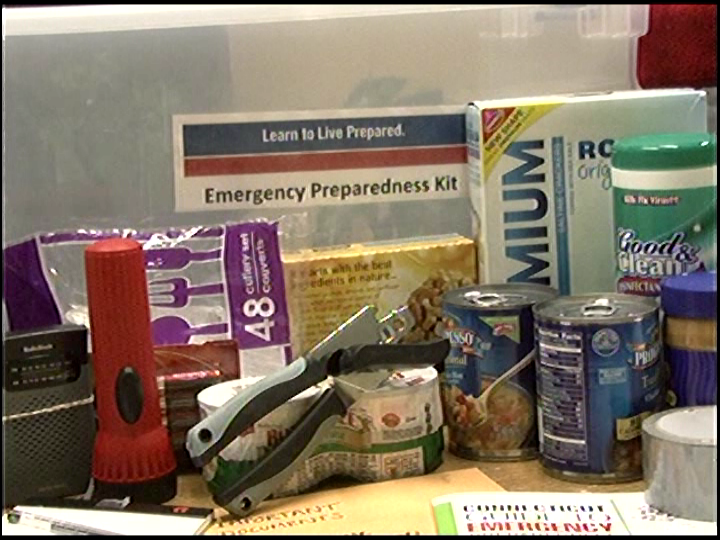EDUCATE YOURSELF AND YOUR FAMILY
-
Find out if there are any places near your home that could be dangerous or cause an emergency like:
-
a nuclear power plant
-
an area that can flood, like land near a river or ocean
-
buildings where chemicals are made or stored
-
-
Have a safe place to go. If you are asked to evacuate (leave your home), you can go to:
-
the home of a family member
-
a friend’s home
-
a motel, hotel or shelter (What to Bring to a Shelter)
-
-
Learn what to do in case of an emergency where you work and at your child's school or daycare.
-
Sign up for the Connecticut Emergency Alerting and Notification Systems to get emergency messages emailed to you or sent by text message to your mobile phone. For more information and to register, go to www.ct.gov/ctalert.
![]()
MAKE A PLAN FOR YOURSELF AND YOUR FAMILY
-
Pick safe places in your home where you can go to if there is an emergency. Tell everyone who lives there.
-
Pick two different ways to get out of your home in case you have to leave it. Tell everyone who lives there.
-
Pick a place that your family will meet in case you are separated during an emergency. Tell everyone in your family.
-
Pick one place that’s in your neighborhood.
-
Pick one place that’s outside of your neighborhood.
-
-
Pick your family contacts – two people you and your family members can call in case you are separated during an emergency.
-
Pick one person who lives in the same state.
-
Pick one person who lives in a different state.
-
Write down your contacts' phone numbers and make sure everyone in your family has a copy of them.
-
-
Pick a place where you can stay in case you have to evacuate your home for a few days.
-
Make a plan for what you will do to keep your pets safe if there is an emergency.
-
Know how to turn off the electricity, gas and water in your home in case you are asked to do it.
-
Make sure everyone knows the plan.
![]()
MAKE AN EMERGENCY SUPPLY KIT
If there is an emergency in your area, you might not be able to get food, water or other things you need to survive. Also, the heat, water and electricity in your home might not work. That’s why you have to make an emergency supply kit and keep it in your home. The kit should have enough supplies for you and your family for at least three days. In a pandemic (worldwide disease outbreak), you may be asked to stay home for weeks to help stop the spread of the disease.
You would use this kit if you are told to stay at home during an emergency or if you are told to evacuate.
![]()
PACK A BAG OR A CONTAINER WITH THESE THINGS FOR YOUR EMERGENCY SUPPLY KIT:

- Water:
- Food:
- food in cans or sealed packages like soup, tuna fish, granola bars, and canned fruit
- foods and juices that do not have go in the refrigerator or be cooked
- food for infants or the elderly
- A manual can opener, paper plates, plastic utensils and something to cook on like a small grill with fuel. Be sure to use charcoal and gas grills outside to prevent carbon monoxide build-up.
- Bleach and eyedropper (to treat water).
- Paper towels, toilet paper, soap.
- Battery-powered radio, flashlights and cell phone, extra batteries.
- Blanket/sleeping bag, pillows for everyone in the family.
- Extra clothing for everyone in the family.
- Things babies and children need like diapers, games, toys and books.
- First-aid kit: (Tips for creating a useful first-aid kit, Spanish)
- medicines (prescriptions, fever reducers and aspirin)
- eye glasses and contact lens supplies
- list of the doctors you go to and their phone numbers
- medical supplies (colostomy supplies, insulin syringes)
- Garbage bags and cleaning supplies.
- Things your pets need like food and water, a pet carrier or cage, medicines, muzzle, collar, leash, ID tags and their immunization records.
- Extra set of car keys, credit cards, cash and important information like social security numbers and birth certificates.
- Plastic and duct tape (see Sealing the Room).
- A copy of "The Connecticut Guide to Emergency Preparedness."
- Pictures of your family members and pets in case you are separated and need help looking for them.
Check and refill your kit every few months to make sure no food or batteries have expired. A good time to do it is when you change your clocks in the fall and the spring. You can build your kit over time by buying one thing, like a can of food or batteries, at a time. Before you know it, you'll have your emergency supply kit stocked and ready to go.
Video: Prepare Your Home For An Emergency![]()
WHAT TO WRITE DOWN
Write down where your family spends most of their time: work, school, daycare, the homes of friends and family members. Workplaces, schools and daycare centers should have emergency plans. Find out what they are and write them down. Find out what your town will do in case of an emergency by calling the town hall. Write down that plan. Local TV and radio stations can give you important information during an emergency. Write down at least three local radio and televisions stations.
Make a list of important phone numbers and information and make a copy for everyone in your family.


